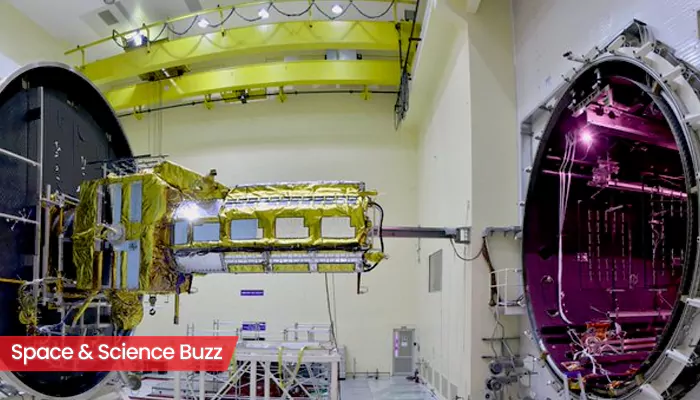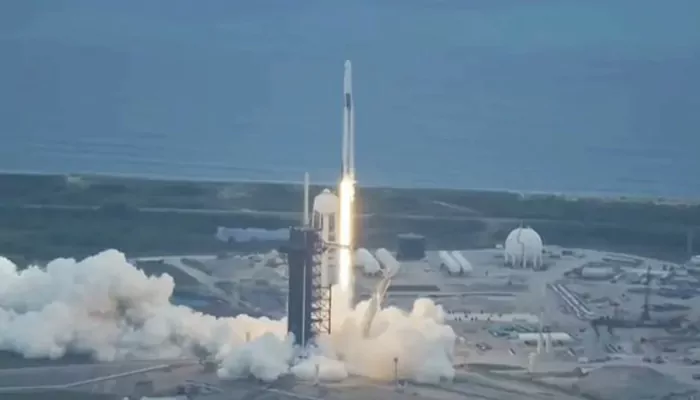
Here are today’s most important updates from the realm of Science and Space.
Several posts circulating online have claimed that a total solar eclipse will take place today, August 2, 2025, leading to nearly six minutes of darkness in parts of the Earth. However, experts have confirmed that no such eclipse is occurring today.
The Indian Institute of Astrophysics and NASA have both clarified that there is no such phenomenon today. The confusion appears to have stemmed from incorrect viral posts, some of which falsely referenced NASA.
According to astronomers, the next total solar eclipse visible from Earth is scheduled for August 12, 2026, and it will be visible in Greenland, Iceland, Spain, Russia, and a small area of Portugal. The ‘Eclipse of the century’ will take place on August 2, 2027, and will be visible over parts of Europe, North Africa, and the Middle East for a duration of 6 minutes and 23 seconds.

In light of the widespread misinformation, experts have urged the public to rely on verified astronomical data. Eclipses are well-predicted celestial events, and any such occurrence would be officially announced in advance by scientific bodies.
NASA’s SpaceX Crew-11 mission has successfully launched four astronauts to the International Space Station (ISS), marking another milestone in commercial spaceflight. The mission lifted off from Kennedy Space Center aboard the SpaceX Falcon 9 rocket and safely docked with the ISS, beginning a six-month stay in orbit. The crew includes NASA astronauts Zena Cardman and Mike Fincke, JAXA (Japan Aerospace Exploration Agency) astronaut Kimiya Yui, and Roscosmos cosmonaut Oleg Platonov. They will conduct a wide range of experiments during their time aboard the station.

One of the highlights of this mission is the transportation of disease-causing bacteria samples, including Salmonella typhimurium, to study how microgravity affects their behavior. Scientists hope this research will provide insights into bacterial resistance and help improve future treatments on Earth and in space missions. Crew-11 also carries equipment for research in climate monitoring, human health, and space technology. Their work will support preparations for future deep space missions, including Artemis and Mars exploration goals.
(Credit: 12NewsNow)
In a breakthrough combining artificial intelligence and synthetic biology, scientists have successfully used AI-designed proteins to generate T-cells, a type of immune cell critical for fighting infections and cancer.
The study, published in Nature, involved researchers from the University of Washington’s Institute for Protein Design. They created synthetic proteins that mimic natural cellular signals, triggering stem cells to develop into T-cells. This could revolutionize how immune therapies are developed, especially for patients with weakened immune systems.
Typically, T-cells are produced in the thymus, an organ that shrinks with age or may be damaged by diseases or treatment. By engineering proteins that activate the same pathways as the thymus, researchers were able to guide stem cells into becoming functional T-cells without needing the organ itself.
The design of T cell receptors by #AI is poised to accelerate #cancer immunotherapy.
— Science Magazine (@ScienceMagazine) August 2, 2025
Learn more in a new #SciencePerspective: https://t.co/OveoK9bFtt pic.twitter.com/dLzsRRBEhg
(Credit: Science Magazine)
These custom-designed proteins were created using AI tools like AlphaFold and RoseTTAFold, allowing scientists to build molecules from scratch with precise control over their shape and function. If proven in clinical settings, this method could offer new ways to regenerate immune systems, support immunotherapy, and treat various critical conditions.
The NASA-ISRO Synthetic Aperture Radar (NISAR) satellite has officially entered its critical 90-day commissioning phase, a key milestone that will determine the readiness of one of the most ambitious Earth observation missions to date.
Launched earlier this year, NISAR is the first satellite mission jointly developed by NASA and ISRO. It carries two advanced radar systems - L-band (NASA) and S-band (ISRO) - designed to map Earth’s surface with high precision. During the current phase, scientists will carry out rigorous checks, calibrations, and orbital adjustments to prepare the satellite for full-scale Earth observation.
This synthetic aperture radar will track minute changes in Earth’s land and ice surfaces, enabling scientists to study natural hazards like earthquakes, landslides, and volcanic activity, as well as long-term changes in glaciers, forests, and groundwater. Over the next three months, engineers from both space agencies will monitor and validate the satellite’s performance. Once successfully commissioned, NISAR will begin delivering high-resolution data by early 2026, with open access for global researchers.
Built across continents in phases, NISAR is a result of global teamwork and tech. NISAR came together through years of integration and testing.
— ISRO (@isro) July 25, 2025
2 Nations, 1 Mission.
NISAR’s build journey is a story of teamwork.
Milestone of Firsts
✅ First dual-band radar satellite
✅ First… pic.twitter.com/ykQwPjN7lP
(Credit: ISRO)
The mission is seen as a landmark in international collaboration and a significant leap in Earth science, climate monitoring, and disaster preparedness.